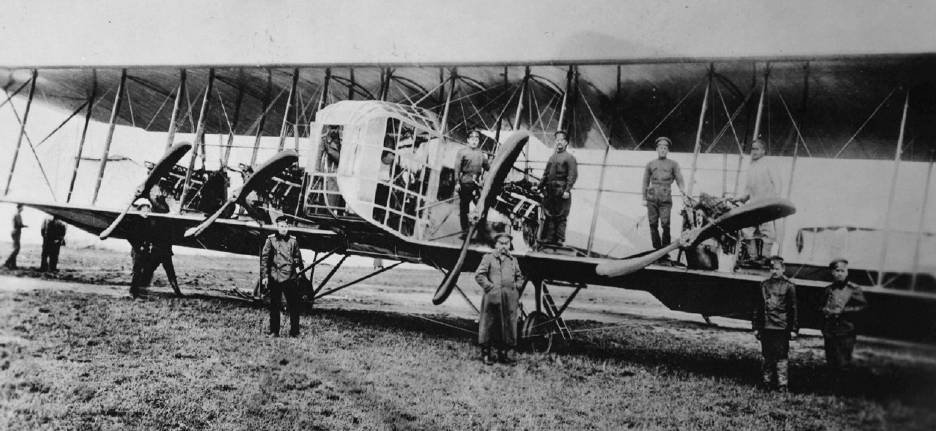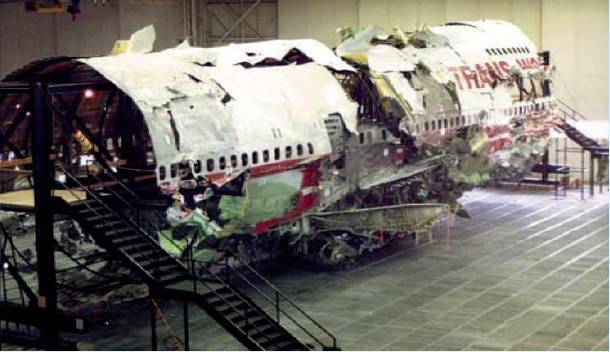Book Reviews
Book Reviews
By James K Libbey
Naval Institute Press, 291 Wood Road, Annapolis, MD 21402, USA. 2019. xii; 250pp. Illustrated. $38. ISBN 978-1-68247-423-5.
 Sikorsky Ilya Muromets S-27 type E (Yeh-2) bomber. San Diego Air & Space Museum.
Sikorsky Ilya Muromets S-27 type E (Yeh-2) bomber. San Diego Air & Space Museum.
The author is a Professor Emeritus at Embry-Riddle Aeronautical University where he taught aviation history and Russian-American relations, so it can be assumed that this book is authoritative. It is also interesting for anyone seeking knowledge of the beginnings of Russian airpower.
Chapter 1 sets the scene and explains Russia’s attempts to modernise, following its defeats in the Russo-Japanese War of 1904-05. Reference is made to Alexander Mozhaiskii and his steam-powered aircraft which, in early Soviet days, was portrayed as a pioneering heavier-than-air machine claimed as the forerunner of such machines, whereas the so-called flight was uncontrolled and ended in a crash.
Russian air power began in earnest through the Imperial All-Russian Aero Club and the Farman Model III, which was licence-built in Russia. Dmitri Grigorovich designed and built flying boats and Igor Sikorsky, went to France to study aeronautics. His S-6 won the Russian military competition and Sikorsky became probably the best known Russian aeronaut.
Chapter 2 follows the timeline to the start of WW1 in 1914, then known as the ‘Great War’. At the start of the war the aristocratic background of most of the pilots gave way to accelerated training to make up for losses and deaths in combat missions and accidents. The main training centres at Gatchina and Sevastopol were expanded and new training fields were established in Kiev, Odessa, Omsk, Tashkent, Tiflis and Warsaw. Family background no longer served as a key factor in securing flight school candidates.
The majority of aircraft used by the Russian military were imported, some from the UK and US but mainly Nieuports and Farmans from France, many built in Russia under licence. However, the four-engined Ilya Muromets reconnaissance bomber was designed and built in Russia by Sikorsky.
At the begining of war in 1914, Russia had 40 squadrons but an average of only six aircraft in each. Chapter 3 describes the campaign in the autumn in 1914 and the lack of modern aircraft. The imported Nieuports were already two years old and there was an absence of back-up aircraft. Russia lost 40% of its military aircraft in August 1914 and had to import replacement aircraft and engines. Replacements included imports from the US and Canada, via Vladivostok and had to be transported via the Trans-Siberian Railroad to the front line in Europe. Sikorksky’s four-engined Le Grand was successfully flown in May 1913 but was damaged by the aircraft losing one of its engines which fell onto the Grand’s wings. It was not rebuilt.
Chapter 4 describes how a bigger four-engine bomber, the Ilya Muromets, was built and proved a success and went into limited production and development in a number of versions. Chapter 5 – ‘Flight during the Great Retreat’ – describes how the supply of arms and equipment to the Third Army was irregular and insufficient and gave rise to a large undefended gap left vulnerable by escaping Russians. The aviation department of the Russian Second Army was called into action with a certain amount of success but the corresponding transfer of Russian activity which drew 16 reserve divisions away from the defensive line which gave rise to the Great Retreat, in spite of the activity the Russian Air Force and their FBA (Franco-British Aviation) flying boats. Alexander de Seversky, to use his Americanised name, was the son of pioneer Russian aviator and brother of his army instructor and became a Naval Pilot on the FBA flying boat but was seriously injured in an attack by German gunboats.
Chapter 6 – ‘The Height of the Air War’: The difference in magnitude of the airborne offensives in the Eastern and Western Fronts was substantial. Germany claimed 7,067 air combat victories in the West but only 358 in the East, in spite of the much greater length of the Eastern Front, from Riga in the North to near Romania in the South. Russia suffered enormous losses of 2.5 million troops killed or captured who had to be replaced and imports of hundreds of millions of dollars-worth of raw materials from the US between 1914 and 1917 and 2,500 aero engines from France, Britain, Italy and the US. The situation was not helped by the Tsar Nikolai II and his wife falling under the influence of the notorious Rasputin whose cronies were given high ministerial positions. Rasputin’s murder by Prince Iusupov came too late to save the Romanov dynasty. The Ilya Muromets conducted 442 combat missions during the war and destroyed 40 enemy aircraft, took 7,000 high quality photographs of enemy positions and dropped more than 2,000 bombs.
 Tupolev ANT-4 in the Ulyanovsk Aircraft Museum. Vadim Indeikin.
Tupolev ANT-4 in the Ulyanovsk Aircraft Museum. Vadim Indeikin.
Chapter 7 – ‘The 1917 Revolution Impacts Squadrons’ – describes how the Russian Black Sea Fleet launched a series of important missions against Turkish sailing ships and mines placed by the fleet and five Russian submarines sank 26 more Turkish vessels. Russian troops made it clear that, although they would fight to defend existing front lines, they would not participate in any new offensives.
